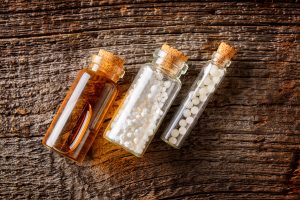Book extract-
“Pic-ac. was discovered by Hausman in 1788. It is formed by the action of Nitric acid on Carbolic acid, Salicin, Silk and many other substances.
Picric acid crystallizes in bright yellow needles or scales of very bitter taste, sparingly soluble in water. The yellow color is imparted to the eyes and skins of patients who take it in the crude and it not only produces a semblance of jaundice, but actually disorganizes the liver if pushed.
Picric acid acts upon brain, spinal cord, lumbar region, occiput, kidneys and sexual organs. Weakness, heavy, tired feeling in body and mind.
It causes degeneration of the spinal cord with paralysis. It acts upon the generative organs probably through the lumbar centers of the spinal cord. A one per cent. solution applied on lint is the best application for burns until granulations begin to form.
Pic-ac. and its compounds are among the most powerful explosives known, lydite being an example. Pic-ac. like Glon., has occipital headaches and bursting headaches. The headache, frontal or occipital is worse on any attempt to use the mind and it may extend down the spine. There is also a headache extending from the top of the spine up over the head to the eyes.
Thery of Paris accidentally discovered in Pic-ac. solution a remedy for burns. He twice dropped burning matter on his hands while working with a Pic-ac. disinfectant and was astonished at the absence of pain or injury.
From that date Pic-ac. became his principal remedy for burns and though others have complained that it caused violent pains, Thery has only once in some thousands of cases had to abandon its use on that account.
A. C. Blackwood gives the details of its use. Burns of the first and second degree only are suitable. A saturated solution diluted with one quart of water is used. The clothing is removed and the burnt surface cleansed with the solution and absorbent cotton. Blisters are opened but the epithelial covering is carefully preserved.
If extensive, the whole surface may be bathed with the solution and strips of sterilized gauze soaked and applied to entirely cover it, a layer of absorbent cotton held with a light bandage over all. After three or four days the dressing is removed carefully after thorough moistening, as it adheres closely. The second dressing is applied as at first and allowed to remain a week”




